The Center Does Not Hold
Every year, I visit my parents for a bit over a week and a half, and often get some gaming in with my Dad. This year, I had more new shiny toys to show him than usual. I had also just recently tried out Ardennes ’44 with Mark and wanted to keep on that. I knew my Dad had enjoyed AH’s original Battle of the Bulge back in the day, but hadn’t known how much (he had a rep as ‘the expert’ for a while due to writing strategy articles for the IFW), and there was no trouble selecting that as the first thing to try out. We played it by ear at first, but ended up playing the 8-turn scenario with the west map active (since we hadn’t known how far we’d go at first). I’m writing this a bit late, so memories have already started fading a bit.
My Dad took the Germans, and spent some time setting everything up, with only minimal help from the example of play. Overall, the dice were not with him for the initial attacks, especially at first, though they warmed up a bit as combat continued. Notably, the main attacks in the center all ended up as ‘ENG’, hampering American reactions, but not getting the Germans anywhere either, and the north wasn’t a lot better.
After an initial delay for an ENG in the south, the Germans blasted the Americans out of Echternach in the PM, and a broken unit ended up retreating to the A entry hex (which still allowed my turn 2 reinforcements to enter the map). Diekerch held out with an ENG, and another ENG held the position at Hosingen (after reinforcements had come up to help hold the village). Things went better in the north, with American units scattering, and the Germans making their way through the woods near Honsfeld.
The first night didn’t have a lot of action, naturally, and Peiper attacked Honsfeld for an ENG+.
Bad luck for me is the Germans found good bridges over the Our, even if they couldn’t immediately get across (ENG), though they did force a crossing at Burg Reuland on turn 3. I managed to blow the next two bridges further north (the St Vith chokepoint & Schönberg). The 106 Division even partially got out of their pocket. In the north, I finally abandoned the line of improved positions that had been largely undisturbed because of the breakout at Honsfeld. However, the very north sector was solidly held, and stayed that way the entire time.
In the south, the advance was slow, but steady, as I managed to garrison Junglister (the first B entry hex) with less than would be demanded in a blocking position, and the main line started forming from Lintgen to Ettelbruck, though I was having no luck blowing bridges on the Alzette. Skyline Drive was finally clear, and Clervaux was cleared, allowing German units to drive west unopposed, while the 9th Armored blocked the intersection near Weiswampach.
My Dad’s replacement went into Clervaux, while I brought an armored element back on the south edge, and reconstituted an infantry battalion in Houfalize. St Vith held out during the entirety of the third day (18th), while north of it, a lot of work went into a new stable line that looped east of Elsenborn to the lake, and then near Waimes. Both of us were getting stymied by all the powerful units available to each side. The extreme south also stayed stable, with the Germans unable to find any good way of breaking the American line.
In between… was another story. A big problem was a lack of any coherent line north/west of Ettlbruck, and the 10th Armored was thrown into the area to hold up the Germans. Meanwhile, every unit I could scrape up was throwing zones of control over roads to keep the Germans from flying westward in the center. This was generally successful, and the end of the 18th saw the Germans still a few hexes away from Bastogne. As of turn six, the Germans had three victory hexes.
In the AM, the Germans broke into Mersch, which finally broke the Alzette river line, though by that point, all the bridges were blown, leaving Mersch the only way across. The 101st arrived just behind Bastogne, with engineer battalions covering them while they de-trucked. The 82nd moved further north, and started covering the roads in the La Roche area. A somewhat shaky, but solid, line emerged from Elsenborn to Waimes to Recht, with the flank hanging in the air near Beho. St Vith was largely abandoned, and the Germans managed to move into the north side of the lake near Elsenborn, promising further problems there.
And in the PM, turn 8, Bastogne fell. My Dad admitted that he probably wouldn’t have done it if it wasn’t the last turn. There was a fair amount of opportunity for me to potentially cut off his supply, and the Americans besiege the Germans in Bastogne. It certainly was going to be a fluid and unstable situation for some time yet.
Things weren’t going so well for me elsewhere either. My line in the north was holding, but it was a little more fragile than I hoped, and I was still looking for places to counterattack. The constant flow of reinforcements from the north gave me plenty of material for shuffling down the line, and trying to get all the components of scattered divisions together, but it was taking time, and the fighting was approaching Vielsalm, which was further back than I’d hoped. The Germans still had yet to take Ettelbruck, but both flanks were folding in fast, and I was in danger of losing a lot of good units in a pocket.
Final VP count was at 9 out of 14. A lot closer than the turn 6 total. Things had started happening after a slow start.
My Dad really enjoyed the game, and with any luck we’ll make another go of it next year!

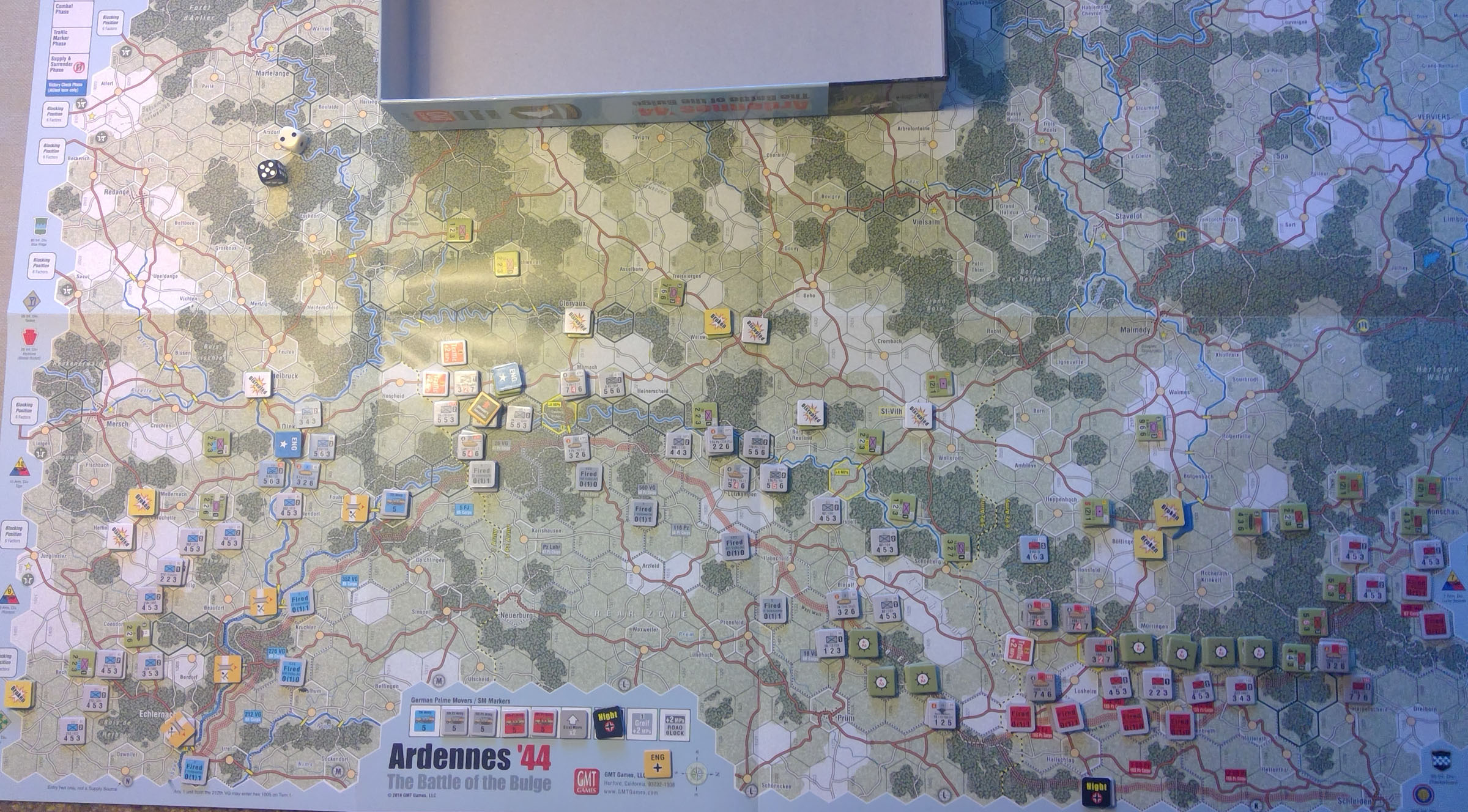
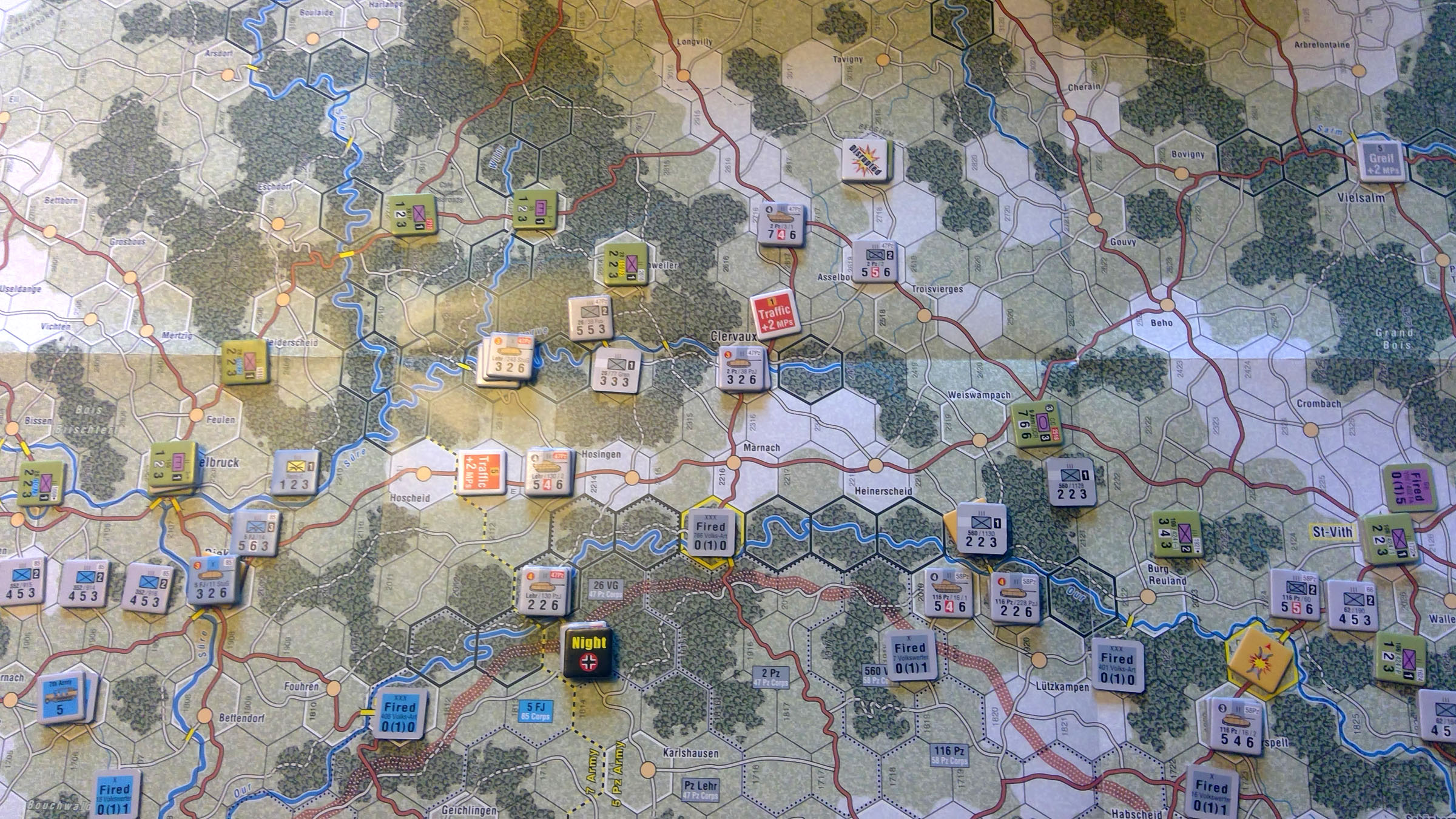
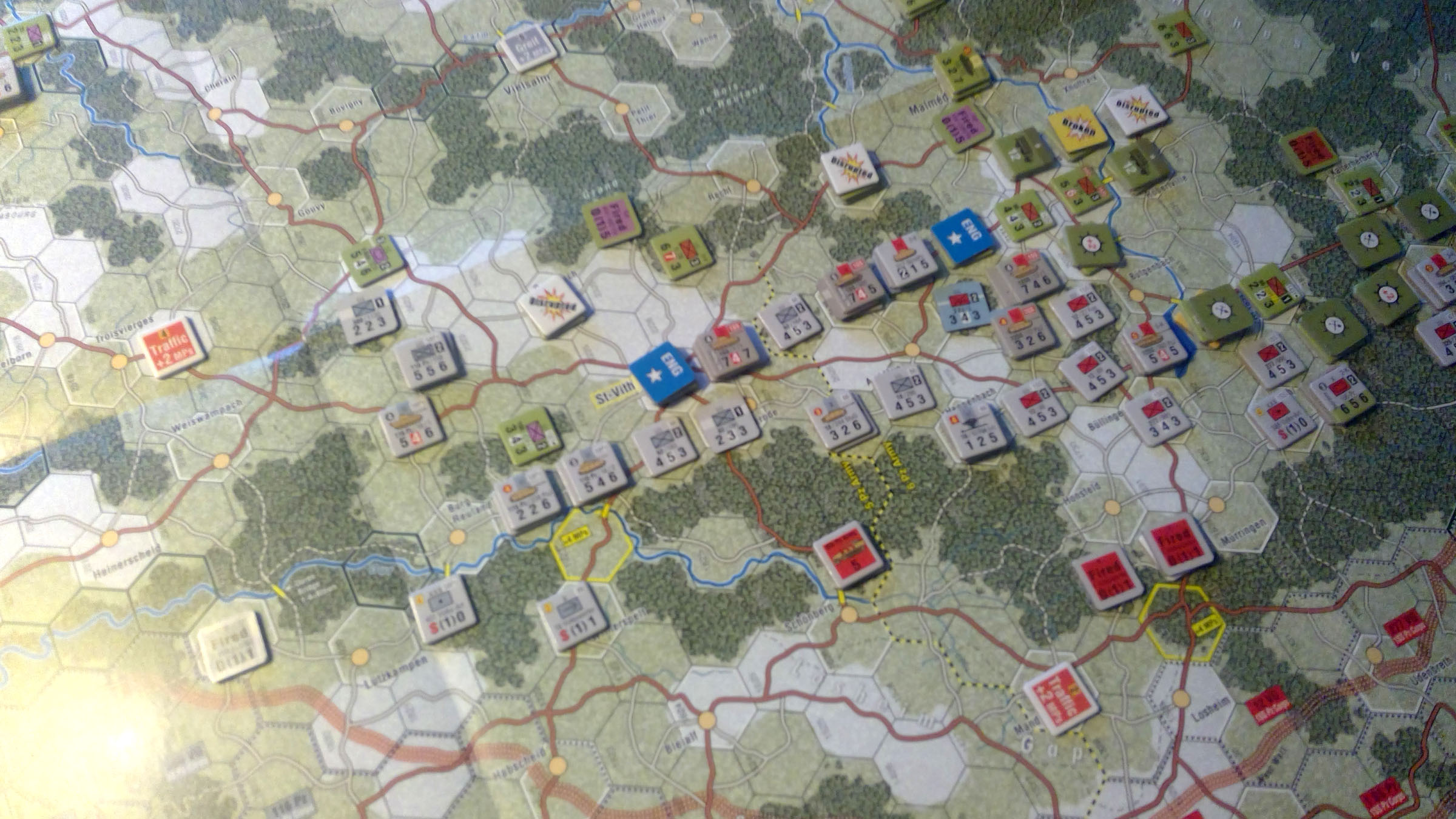
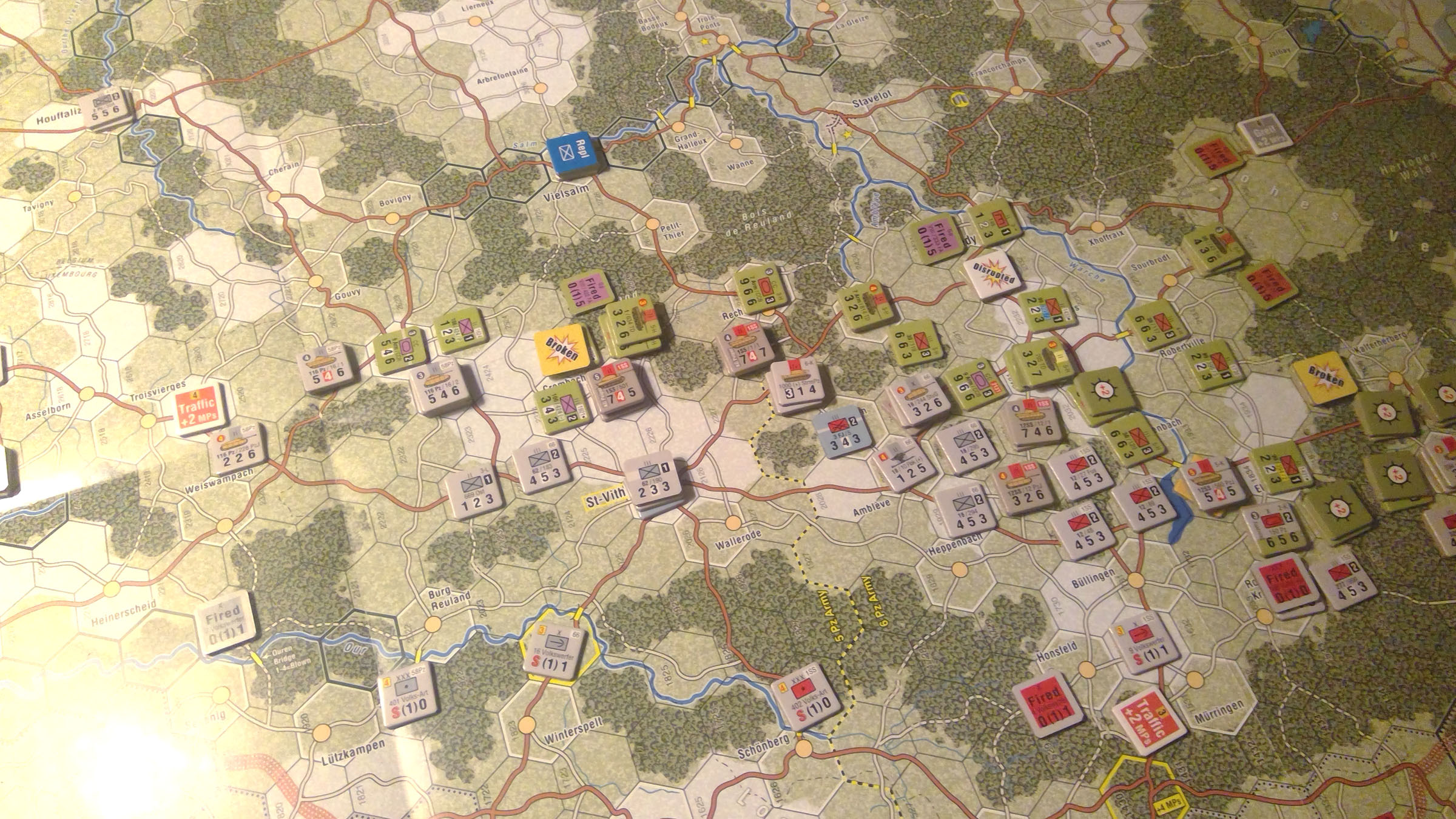
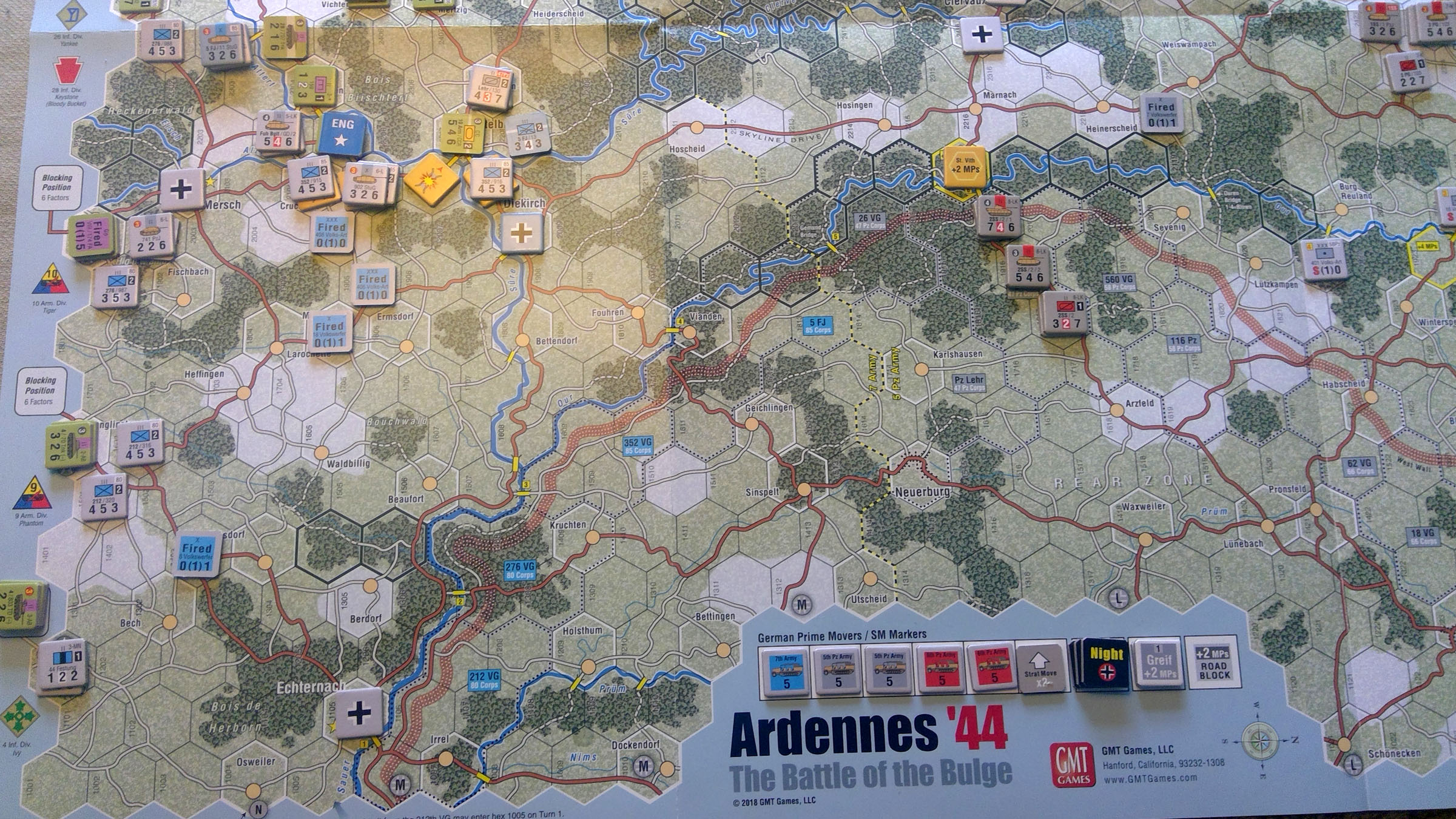
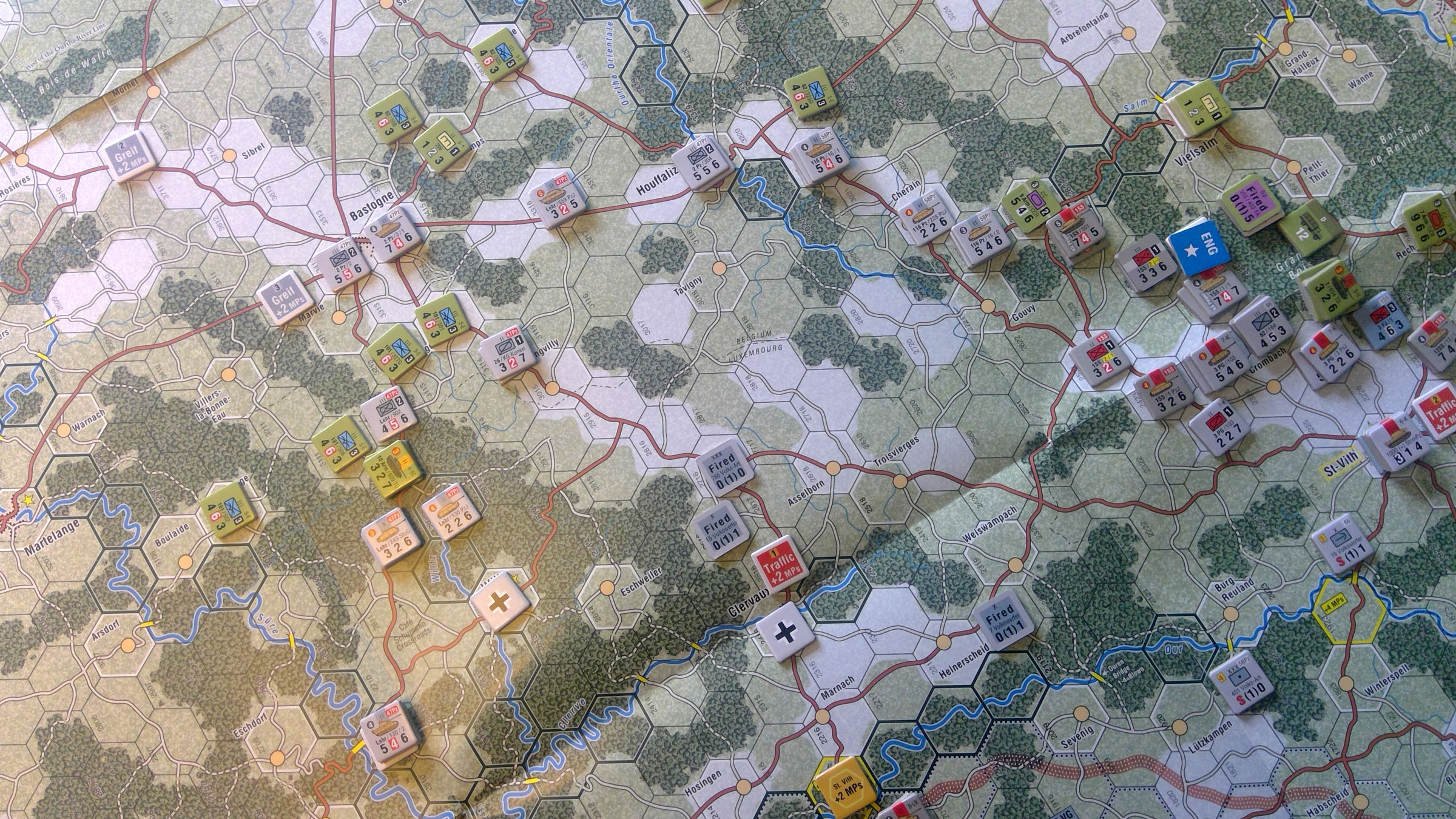
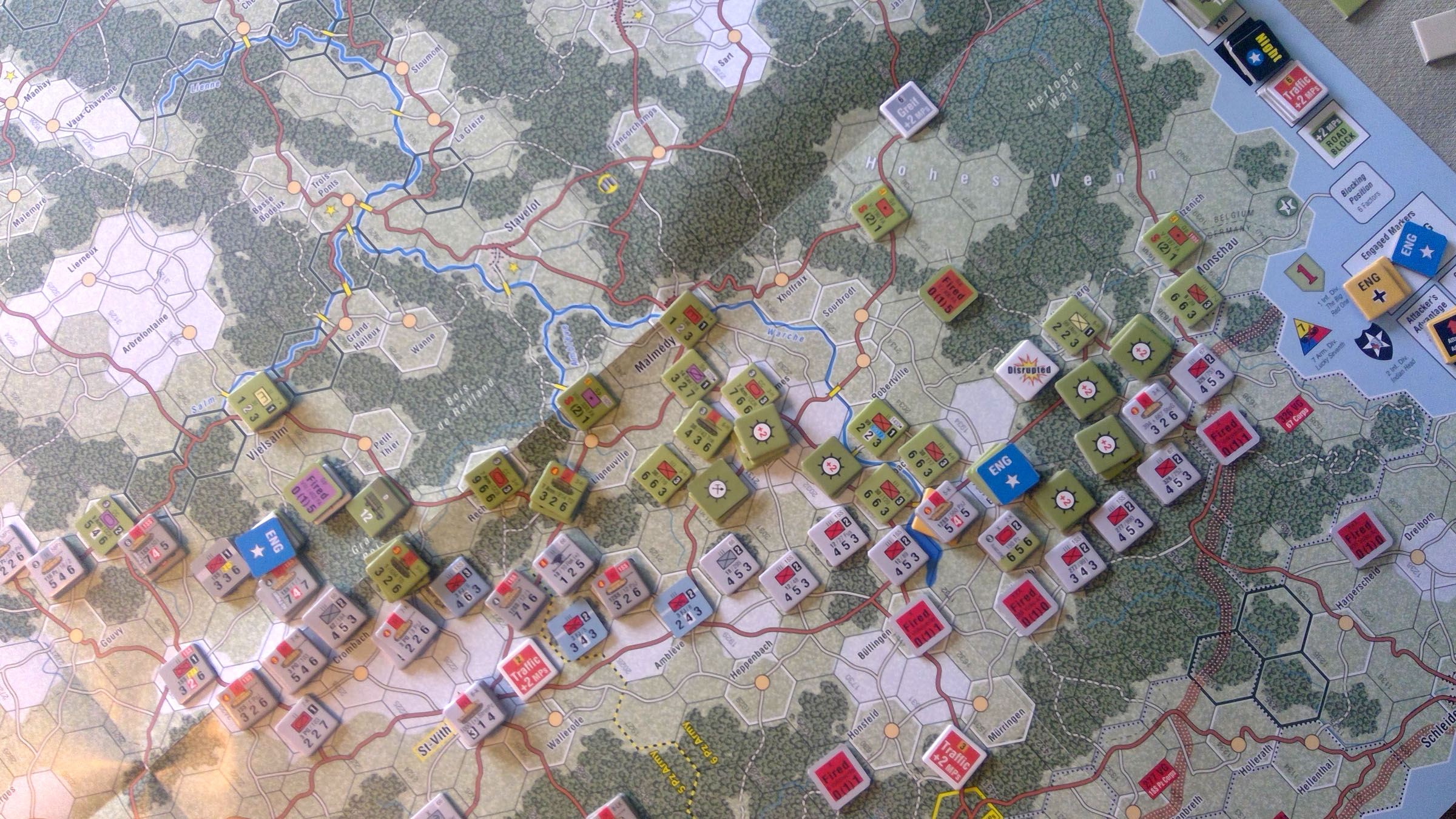
Discussion ¬